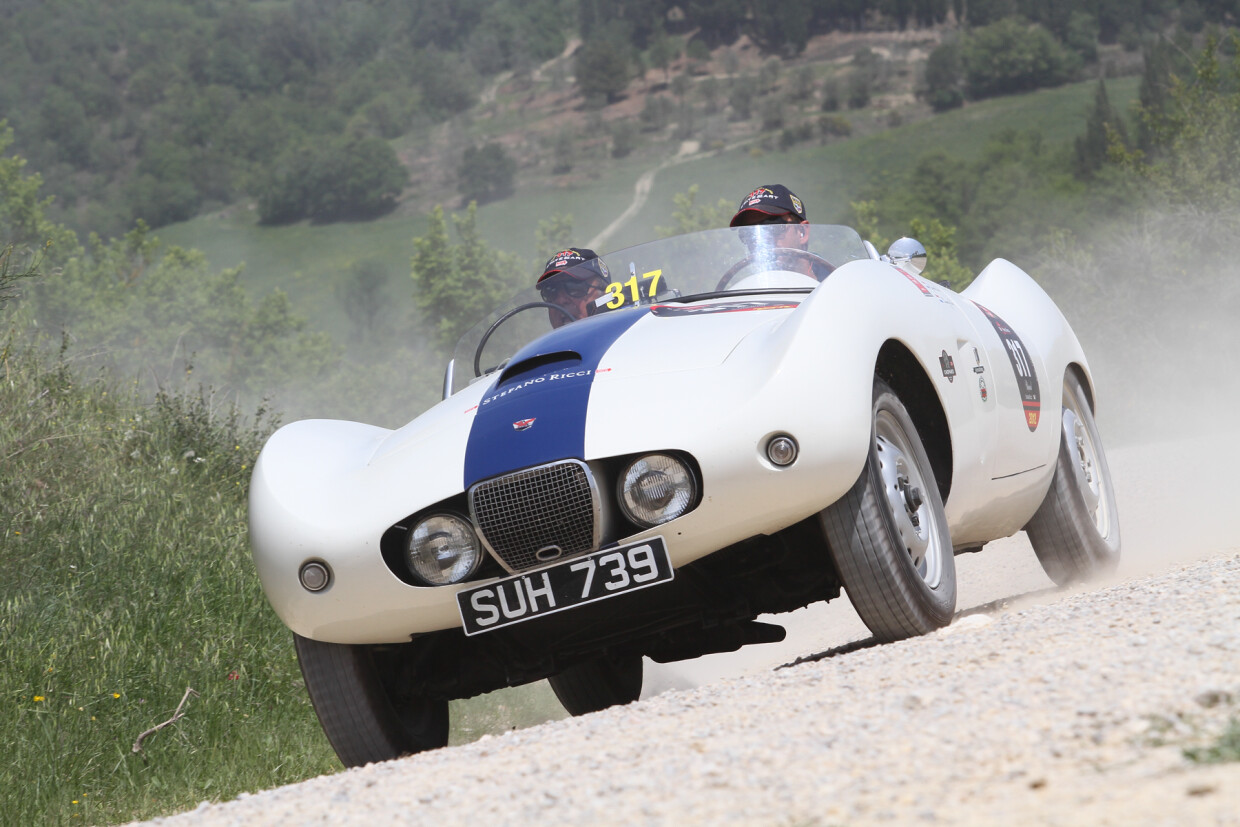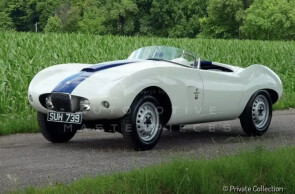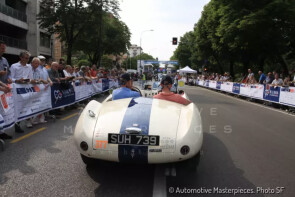
1954 Arnolt Bristol Bolide
ON/OFF
Why am I an Automotive Masterpiece?
In the immediate post-war period, many US importers, operating in the motor industry, created their own brands with which to sell the products distributed by their commercial network. Following the success achieved with the Bertone-bodied MG TDs, in 1953 Stanley H. "Wacky" Arnolt, the American importer of several British marques, asked Bertone to design a light body, suitable both on track and road, for the more powerful 2 -liter Bristol 404 chassis characterized by a short wheelbase. However, the Arnolt-Bristol packed more power than the 404, carrying a tuned version of Bristol's Type BS1 sports-racing engine, a six-cylinder unit that harked back to the prewar BMW 328. Output was 130 horsepower (Bristol touring-car engines were usually rated at 105 bhp in this period). Gearbox and brakes came from Bristol's earlier 403 coupe-sedan. Nuccio Bertone entrusted the study of the line to Franco Scaglione, the new design manager of the Turin bodywork; a very difficult task, given the considerable vertical dimensions of the engine, which forced the engine hood to be positioned at an unusual height for a small “barchetta”. Scaglione made a true masterpiece of “trompe-l'œil”, designing sinuous and accentuated front and rear fenders that divert the attention of the beholder from the prominent prominence of the engine hood. The new roadster created a great sensation at the London Motor Show in October 1953 and at the New York Motor Show in February 1954. The chassis were sent to Turin by rail, where Bertone carried out the bodywork and interiors and organized the shipment of the finished cars overseas. Given the handcrafted construction in small series, many cars are differentiated by small variants, due to continuous evolution and customer requests, however it is possible to divide the production into four main configurations, in which the model was offered. Arnolt Bristol was initially built in the "Competition" version only, that is a “barchetta” with a tiny windshield, intended for racing. Later, the "Bolide" version was created, which differs from the previous one for the larger windshield and the tiny retractable hood. The "Deluxe" set-up followed, featuring a higher level of finish and Connolly leather interiors, being fitted with also a better hood, bumpers and side screens. Also noteworthy are 3 "Coupé" examples, with closed bodywork and retractable headlights. All the versions sold well, also thanks to their racing successes. Only 142 Arnolt Bristols were built, from 1954 to 1961: 85 Competition/Bolide roadsters, 54 DeLuxe roadsters, 3 DeLuxe coupés. The Arnolt Bristol used in competitions were substantially identical to those registered for normal circulation. Any elaborations were due to the intervention of the pilots and their respective mechanics. Many noteworthy sporting results, among which the triumphal participation in the 12 Hours of Sebring in 1955, in which the Arnol Bristol won a crushing victory in the class up to 2,000 cc, conquering the 1st, 2nd and 4th place.
This chassis has been assembled in Italy on a Bristol chassis produced in March 1954, then sent to Arnolt Inc. in Chicago. It was for many years thought to have fallen foul of the Chicago fire which claimed a number of the cars, until it surfaced in the late 1970s. This car was raced in the SCCA series in Texas.





